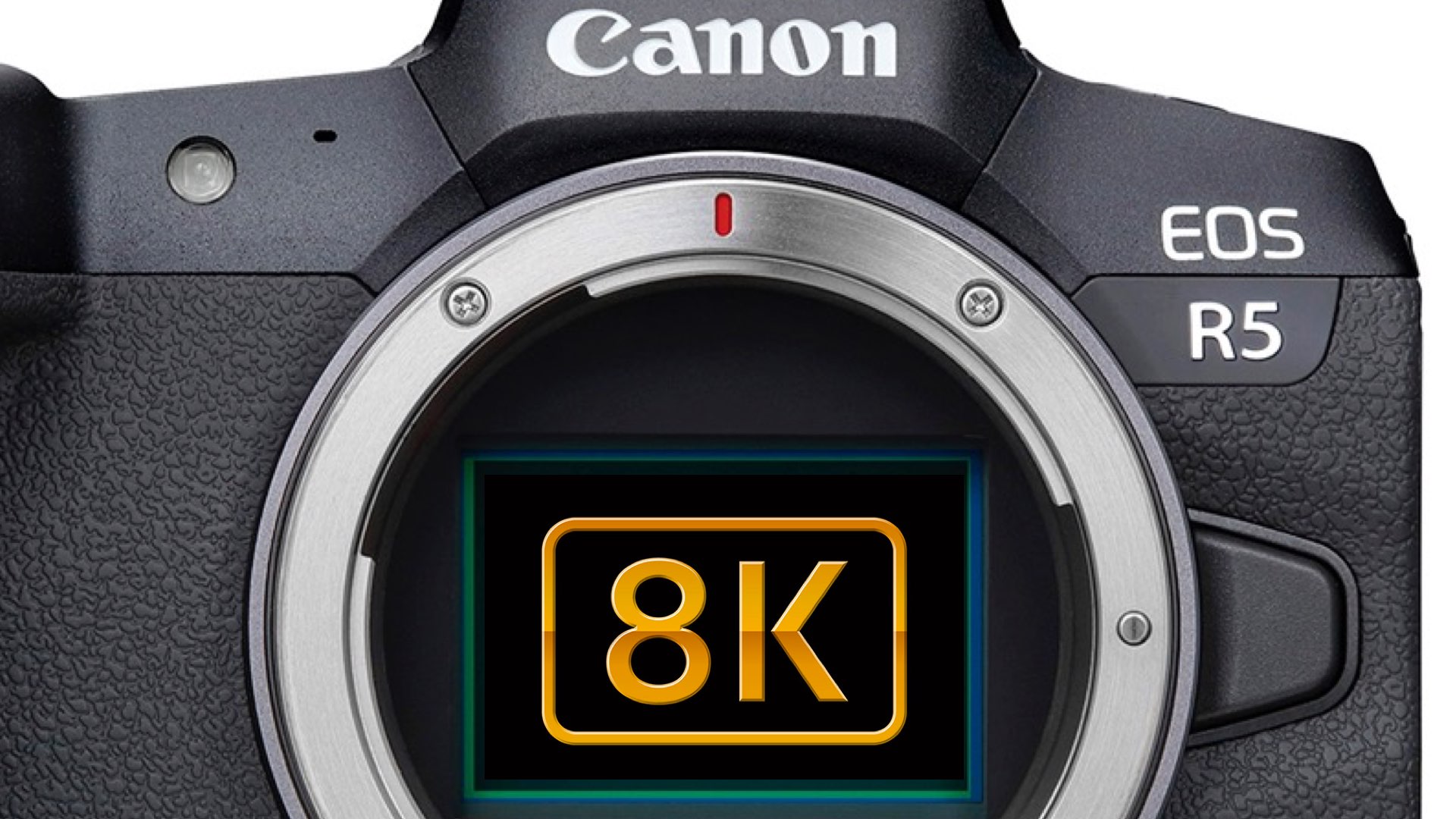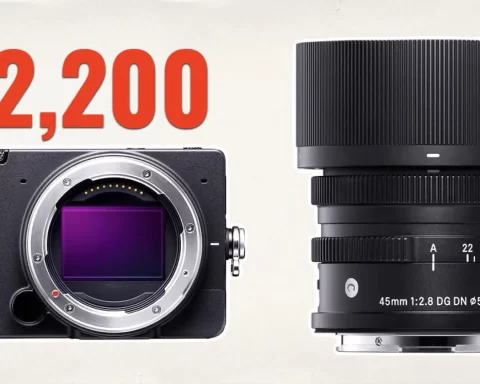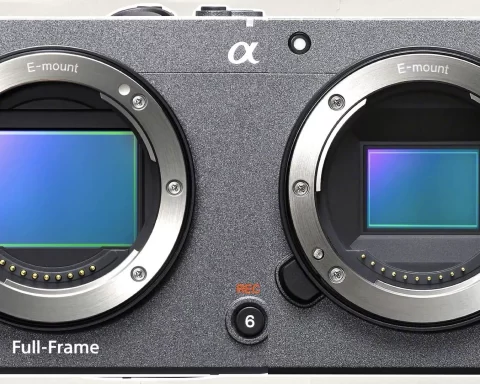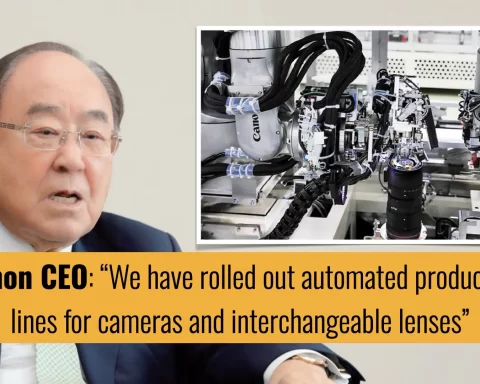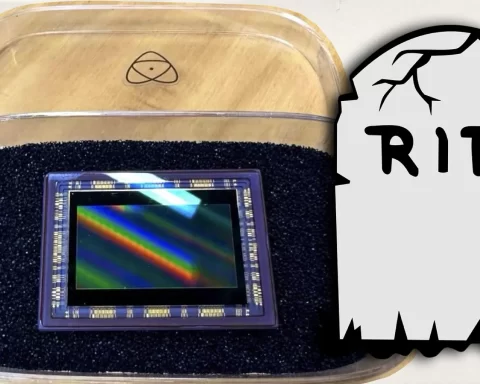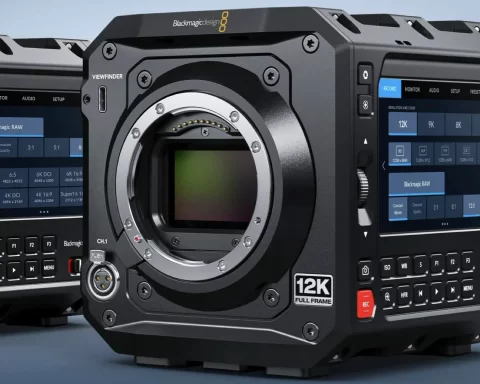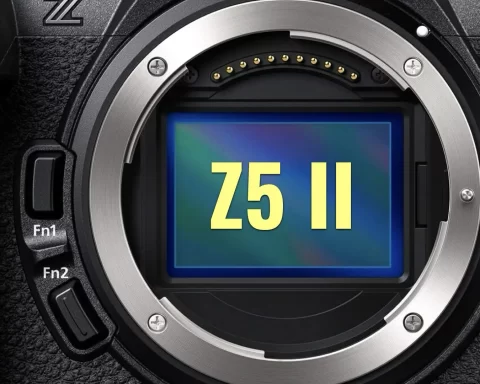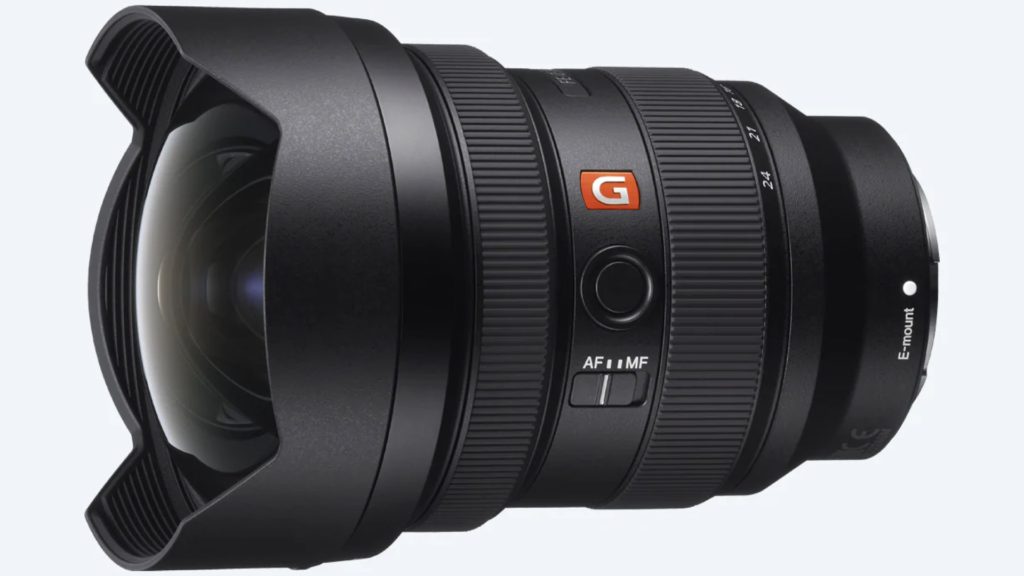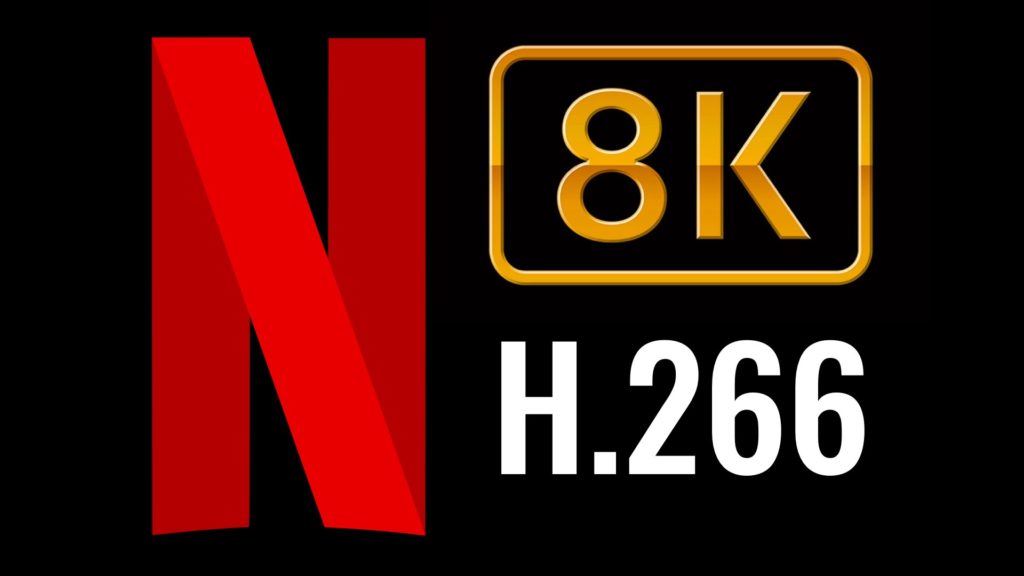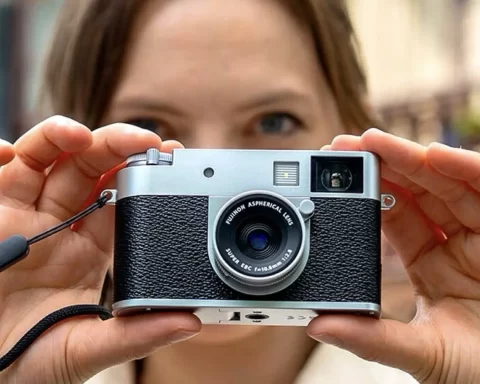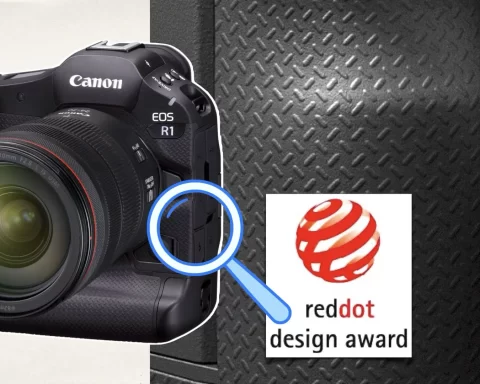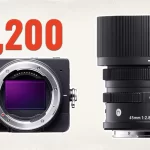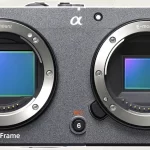The brand new Canon EOS R5 is definitely a pretty impressive piece of filmmaking technology. This small beast is armed with a new advanced full-frame 8K sensor that can shoot 12-bit RAW (uncropped), IBIS, and valid slow-motion capabilities. Read on.
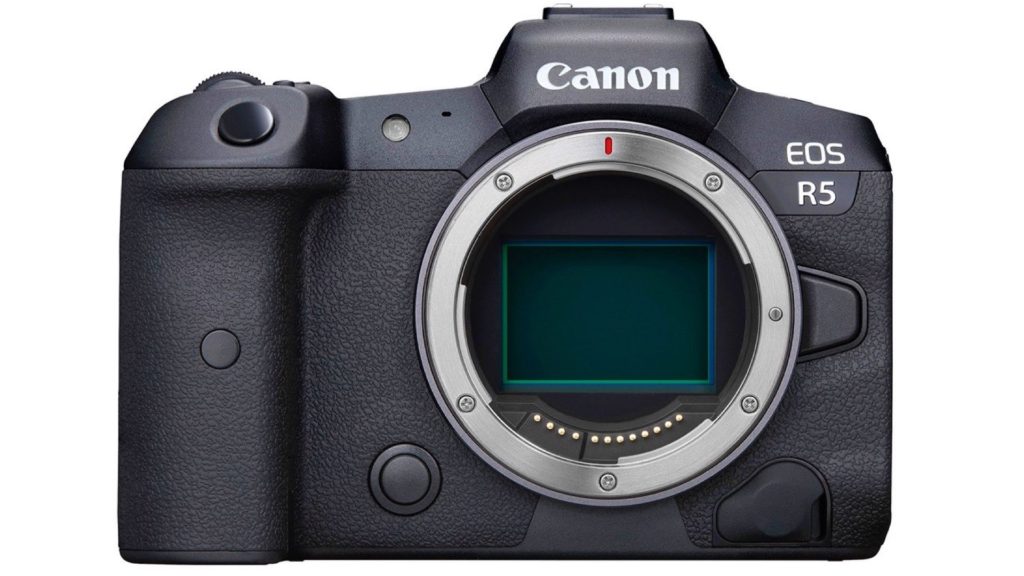
Canon EOS R5: A new beast has just arrived
The Canon EOS R5 is maybe one the most anticipated, rumored, talked-about cameras in this crazy COVID 2020 (except for the over-teased RED Komodo). The new mirrorless by Canon allows the privilege of shooting 8K, 12-bit RAW from a newly developed 45MP full-frame CMOS sensor (uncropped!). This camera was designed to meet professional filmmakers (IBIS and decent slow-mo capabilities) and top photographers as well. Before we dive into the specs, please forgive as this article will focus on the filmmaking strengths of this camera. It needs to be emphasized that this camera is an extraordinary tool for photographers. However, Y.M.Cinema Magazine is about cinema applications. Photography is not our bread and butter 🙂
Sensor: New 45 megapixel full-frame CMOS sensor
The EOS R5 camera features an entirely new Canon-developed CMOS sensor with approx. 45 effective megapixels. The EOS R5 camera is the first Canon EOS camera in the Mirrorless series camera line to feature a DIGIC X Image Processor, which helps to enhance fine detail in the image and the speed of operations across the board.
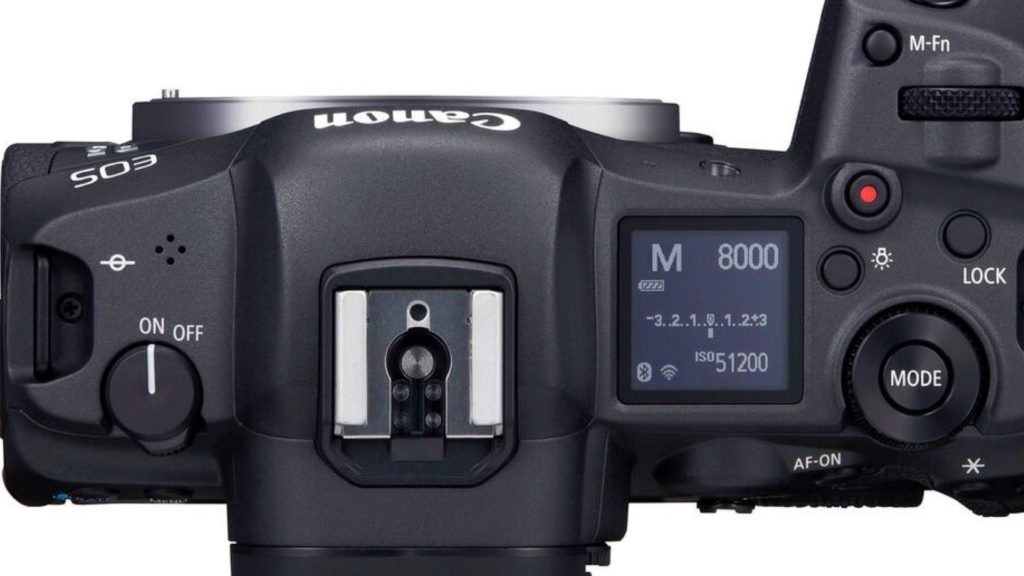
High-speed Focusing with Dual Pixel CMOS AF II
The EOS R5 camera’s highly responsive Dual Pixel CMOS AF II system features a 1,053 Automatic AF zones that can be designated as auto-focus focal points (when Face + Tracking priority AF is selected). This ensures higher-precision Eye Detection AF or allows for you to focus on the desired AF point. Fast action can be captured and focus can be maintained with speed, accuracy, and ease.
Head and Eye Detection
The EOS R5 camera brings head and eye detection to a new level. Even in situations where a camera may struggle to detect a subject, the EOS R5 can locate and a person’s head or eye when people detection is set, allowing ease and accuracy when capturing videos or still images, or while in Live View mode.

8K RAW, 4K up to 120fps
With the high-speed processing capability of the DIGIC X image processor, the EOS R5 is able to record 8K movies (uncropped, at up to 29.97 fps) – a first for Canon full-frame mirrorless cameras. 4K video shooting is also possible at up to 119.9fps, in 4:2:2 10-bit (H.265) Canon Log, and Dual Pixel CMOS AF is available in all 8K and 4K modes. Additional new features include: Internally recorded and uncropped 8K RAW Recording up to 29.97 fps with Dual Pixel CMOS AF, and HDR-PQ Recording (H.265) capability.
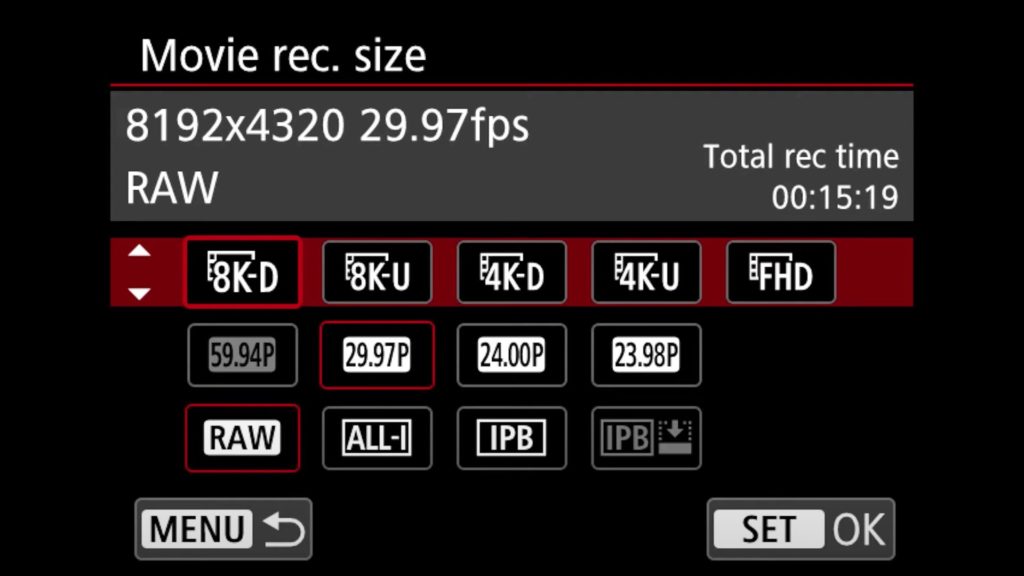
In-body Image Stabilizer: Up to 8 Stops of Shake Correction
The EOS R5 is Canon’s first camera to incorporate 5-axis IBIS (In-Body Image Stabilization). This camera will not only enhance the ability to shoot still images at slower shutter speeds but it will also help reduce camera shake when shooting movies. Additionally, the EOS R5’s IBIS will work in combination with Optical Image Stabilization found in many Canon RF and EF lenses.
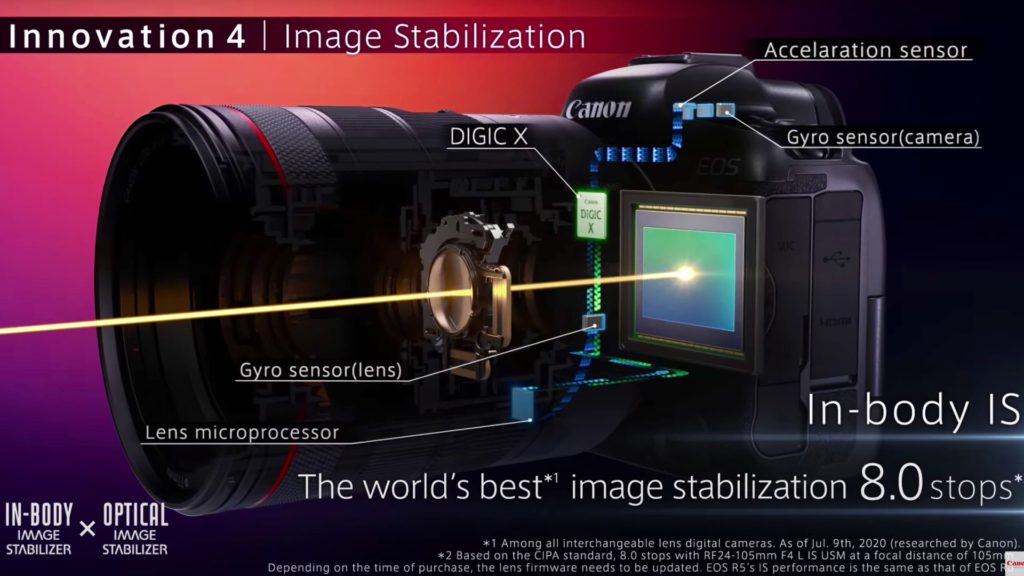
The correction is up to 8 stops of shake correction when combined with certain IS lenses such as the RF24-105mm F4 IS L USM, or when used with certain non-IS lenses as well.
Media: Dual Card Slots for CF express and UHS-II SD Memory Cards
EOS R5 can capture an incredible amount of images through its super-high-speed CF express dual card slots. Plus a UHS-II SD card slot is also provided.
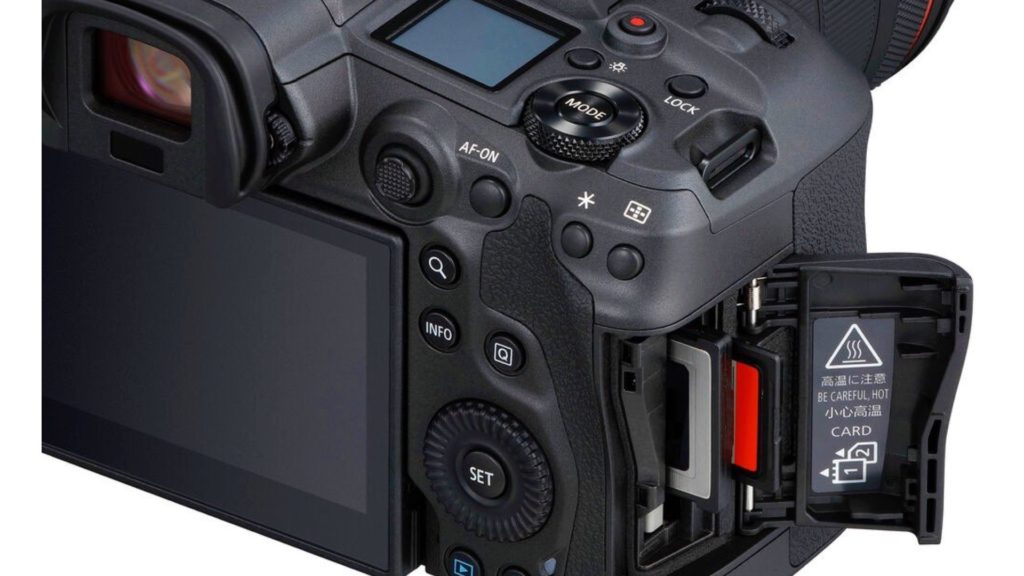
Vari-angle Touchscreen LCD
The EOS R5 camera features a 3.15-inch, 2.1 Megapixel Clear View LCD II Vari-angle Touchscreen LCD. Its extensive flexibility makes it easy to compose and shoot from virtually any angle, making selfies simple and enabling the LCD to fold away when not in use. The brightness of the EVF and the LCD monitor can even be adjusted individually. Touch screen features include settings, review, and even AF point selection.

Multi-controller Customization
This is one of Canon EOS’s significant strengths. The human engineering that allows maximum utilization and facilitation of user experience for fast operation. With its compact body size, the EOS R5 camera features a three-dial User Interface in the main dial, quick control dial 1 and quick control dial 2 which provide direct control over the traditional exposure controls such as Shutter Speed, Aperture, and ISO and are fully customizable to the user’s preference.
Durable magnesium body
Comfortable and solid in the hand, the EOS R5 camera features a rigid yet lightweight magnesium alloy chassis that enhances body durability while shielding the camera from electromagnetic radiation and heat. It also has a tempered front panel for internal rigidity.
Dust-& Water-resistant Sealing
The EOS R5 camera is designed for use in a variety of weather conditions. Sealing materials are used in critical areas like the buttons, terminal covers, the battery compartment, and the card slot cover. Precise design and construction help to minimize accidental penetration of dust and moisture in the rest of the camera body. Combined with an RF lens, or any other weather-sealed EF/EF-S lens, the EOS R5 camera proves to be a reliable partner in virtually any climate.
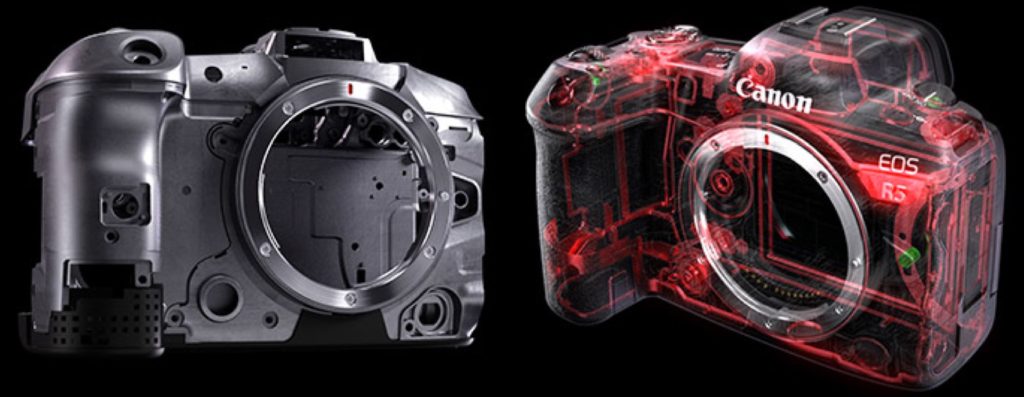
Price
The price of the Canon EOS R5 is one of the most important parameters in the equation. There was an estimation regarding the price range of $7,000 to $9,000. Nevertheless, we are happy that the price is much more affordable. The EOS R5 will cost $3899.00 (body only) and will be available at the end of July. Pre-orders can be made from the B&H website.
Final thoughts
We are not going to mention the word “beast” again, but the R5 is a bad boy (in the positive meaning of the word). 8K, RAW, internal, full-frame, uncropped, IBIS…Should I say more? And all those goodies are packed inside a tough magnesium weather-proof body. This might be a game-changer. The only thing to make a re-consideration buying it is the not-so-NLE friendly codec. It’s not the same as working with R3D or BRAW for instance. Canon should definitely invest some R&D to sharpen the implementation of its codec into NLEs (plugins, SDK…and so on). Improving the RAW post-workflow might be a valid business pathway for Canon. The big question is, why one should buy the Cinema EOS when he can get this bad boy for less than half the price? Anyway, What’re your thoughts about the R5? Would you buy it? Would you shoot with it?

